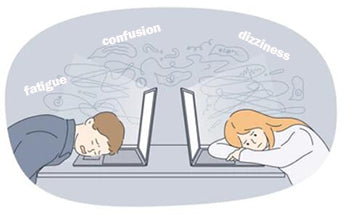Difference Between Hypopnea And Apnea
Cause of Hypoventilation
This can be caused by a variety of factors, including airway obstruction, neuromuscular disorders, and certain medications.
Hypoventilation can be caused by a variety of factors, including poor air quality, smoking, and certain medical conditions. It can also be caused by a lack of physical activity or a sedentary lifestyle.
Treatment for hypoventilation typically involves correcting the underlying cause, such as removing an obstruction or changing medications. In some cases, supplemental oxygen or mechanical ventilation may be necessary.
The Harm of Hypoventilation
Long-term hypoventilation can also lead to a number of other health problems, such as an increased risk of stroke, heart attack, and other cardiovascular diseases.
If left untreated, hypoventilation can lead to a number of serious health complications, including respiratory failure, heart failure, and even death.
It can also lead to an increased risk of developing chronic obstructive pulmonary disease (COPD) and other respiratory illnesses. In addition to the physical health risks associated with hypoventilation, it can also lead to psychological issues, such as depression and anxiety. People with hypoventilation may also experience difficulty concentrating and difficulty sleeping.
High-risk groups for hypoventilation include people with chronic lung diseases, such as COPD, asthma, and cystic fibrosis; people with neuromuscular diseases, such as muscular dystrophy and myasthenia gravis; and people with obesity; COPD, people with chest wall deformities, people with chronic kidney disease, people with chronic liver disease, people with chronic anaemia, people with chronic pain, people with chronic respiratory infections, people with chronic bronchitis, people with asthma, people with cystic fibrosis, people with chronic bronchiolitis etc.
It is important to seek medical attention if you are experiencing any of the symptoms of hypoventilation.
Treatment of Hypoventilation
- Lifestyle changes, such as increasing physical activity, quitting smoking, reducing stress, weight loss, avoiding alcohol and sleeping on your side.
- Through breathing exercises increase the amount of oxygen in the body.
- CPAP (Continuous Positive Airway Pressure) is a common treatment for hypoventilation. It is a non-invasive form of ventilation that helps to keep the airways open and improve breathing.
- In some cases, medications may be prescribed to help reduce the symptoms of hypoventilation.



